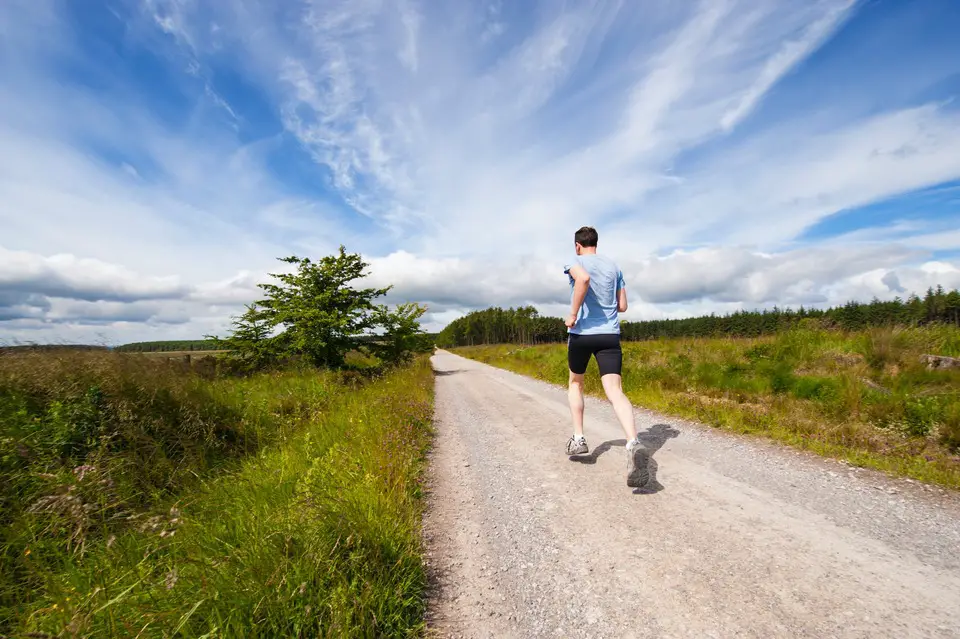Hiking with Runner’s Knee: Treatment & Prevention

If you’re a hiker who also enjoys a bit of running, you’ve probably had your share of knee pain. And if you’re like most, you’ve probably tried all sorts of remedies to get rid of that pain—from ibuprofen and ice packs to rest and physical therapy. But what if the source of your knee pain is actually related to your running? If that’s the case, then treating your runner’s knee may be the key to getting rid of your hiking knee pain.
In this blog post, we’ll explore the causes and treatment options for a runner’s knee and offer some tips for avoiding it in the first place. So whether you’ve dealt with a runner’s knee before or are just looking for ways to avoid it, read on to learn what you need to do.
Quick Links
What Is Runner’s Knee?
Despite the name, runner’s knee can be caused by several different things, including walking, hiking, and even sitting for long periods.
The condition is also known as patellofemoral pain syndrome (PFPS) and is characterized by pain in the front of the knee and around the patella, or kneecap. The pain is often worse when walking or hiking downhill, taking stairs or hiking uphill, or sitting for long periods of time with the knee bent.
What Are The Causes Of Runner’s Knee?
So you say you don’t run, but you still get runner’s knee? Well, as we mentioned, there are a number of different things that can lead to the development of this condition. Here are some of the most common causes:
- Overuse: This is perhaps the most common cause of runner’s knee and is often seen in people who participate in high-impact activities.
- Poor alignment: If your knee is not properly aligned, it can put extra stress on the joint, which can lead to pain. This is often seen in people with flat feet or those who have knock-knees.
- Muscle weakness: If the muscles around your knee are weak, they may not be able to provide the support that your joint needs. This can lead to instability and pain.
- Injury: A direct blow to the knee or a sudden twist or turn can cause a runner’s knee. This is often seen in athletes who participate in contact sports. But it can definitely happen during high-intensity hiking.
- Wearing bad shoes: Wearing shoes that don’t fit properly or that offer poor support can also lead to runner’s knee.
If you’ve only been hiking, you can see that there are a number of common hiking-related issues that can lead to the development of runner’s knee. As a matter of fact, I would say that the vast majority of hikers will experience some form of knee pain at some point in their lives.
How Is Runner’s Knee Diagnosed?
I used to be a big fan of self-diagnosing myself when I was young. (Don’t do this.) But as I’ve gotten older, I’ve realized that it’s always best to see a doctor or physical therapist when something is wrong. They will be able to properly diagnose you and offer the best treatment options.
That being said, there are a few things that your doctor or PT will look for when diagnosing runner’s knee.
These include:
- Pain: This is the most obvious symptom and is often worse when walking, running, or taking stairs.
- Swelling: You may notice some swelling around your knee joint.
- Tenderness: Your knee may be tender to the touch, especially around the patella.
- Redness: You may also notice some redness around your knee.
- Instability: You may feel like your knee is going to give out on you.
- Locking: Your knee may feel like it locks or catches when you move it.
How Is Runner’s Knee Treated?
The good news is that runner’s knee is a treatable condition. In most cases, you can get rid of the pain with some simple self-care measures. However, in some cases, you may need to see a doctor or physical therapist for more aggressive treatment.
Here are some of the most common treatment options for runner’s knee:
RICE
This stands for rest, ice, compression, and elevation. It’s a tried-and-true method for treating all sorts of injuries and can be very effective for runner’s knee.
Physical therapy
Depending on HOW you’ve gotten runner’s knee, physical therapy may be a good option. If it’s due to alignment issues, they can teach you exercises to correct the problem. They can help you strengthen the muscles around your knee if it’s due to muscle weakness. However, not all cases of runner’s knee will benefit from PT.
Surgery
Surgery may be necessary for damaged cartilage or ligaments in rare cases. This is usually only seen in severe cases or if other treatments have failed.
Stretching
Stretching the muscles around your knee can help to relieve pain and improve flexibility. Here is a great video on some stretches for runner’s knee:
Strengthening
Strengthening the muscles around your knee can help to support the joint and reduce pain. Some exercises worth considering are squats, lunges, and leg raises.
Knee support
You may also want to consider wearing a knee brace or other type of support. This can help to stabilize the joint and reduce pain.
How Do You Hike with Runner’s Knee?
If you have runner’s knee, it doesn’t mean that you have to hang up your hiking boots for good. However, you will need to take some precautions and make some adjustments to the way that you hike.
Here are a few tips:
Wear the right shoes
This is important for all hikers, but if you have runner’s knee, it’s even more important. Make sure that your shoes fit properly and offer good support. As we mentioned earlier, wearing shoes with improper support can be a major contributing factor to the development of runner’s knee.
Take breaks
If you start to feel pain in your knee, take a break. Find a spot to sit down and rest for a few minutes. This will help to reduce the stress on your knee and give it a chance to recover. If you feel your knees starting to burn, you definitely need a break.
Adjust your pack
If you’re carrying a lot of weight in your backpack, it can put extra strain on your knees. Try to lighten your load as much as possible and distribute the weight evenly.
Consider Trekking Poles
Trekking poles can take a lot of the stress off of your knees. They are especially helpful when going downhill, as they help to take some of the impact. Here are some great budget-friendly trekking poles to check out.
Stretch Before And After Your Hike
No one likes stretching – I get it! But trust me, it’s a lot better to take 10 minutes to stretch before and after than having to deal with a lifetime of knee pain. These are some great stretches to try:
Conclusion
Runner’s knee is a common injury, but that doesn’t mean that you have to live with the pain. Plenty of treatments available can help reduce your pain and get you back on the trail. Just remember to take it easy, listen to your body, and seek professional help if needed.
Do you have any tips for dealing with runner’s knee? Let us know in the comments below!






